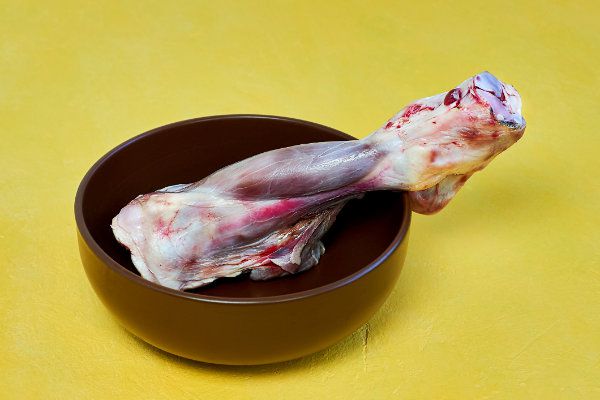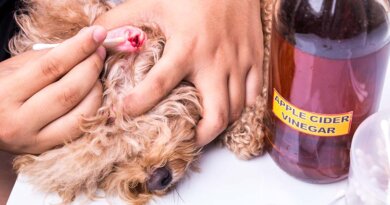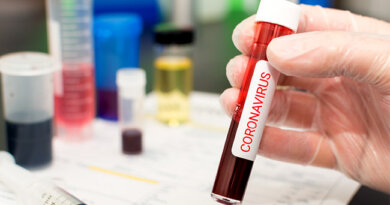Raw Meaty Bones As Part of Your Dog’s Diet
Most of us who feed a raw diet to our dogs include whole raw meaty bones (RMBs), animal parts that are at least half meat but also include bone that is fully (or mostly) consumed. This is in contrast to recreational bones, such as knuckle and marrow bones, which usually have little meat and where the bone itself is not eaten.
RMBs that are commonly fed include chicken necks, backs, and leg quarters; turkey necks; lamb breast and necks; pork breast (riblets) and necks; and canned fish with bones, such as jack mackerel, pink salmon, and sardines (preferably packed in water rather than oil). Raw fish can also be fed, though some may harbor parasites (freshwater fish are more likely to have problems than saltwater fish). Never feed raw salmon or trout from the Pacific Northwest (California to Alaska), as this can cause a fatal disease called salmon poisoning in dogs. Cooking makes salmon safe to eat; canned fish is cooked, so there’s no concern about salmon poisoning from canned salmon.
It’s not always easy to find RMBs. Ask your local meat manager or butcher; they can often order them for you, though you may have to buy a case at a time. (Most of us who feed our dogs a raw diet have purchased a separate freezer to help store the food!) Ethnic markets often have a wider selection than grocery stores do. There are a number of raw food co-ops and groups who share information and buy in quantity directly from vendors, both to lower the cost and to gain access to a wider variety of foods. If there is no group in your area, consider starting one.
You can keep costs down by buying in bulk, looking for sales, and buying meat that is close to its expiration date and marked down. It helps to develop a relationship with your suppliers, who may be willing to save bargain-priced meats for you.
RMBs should make up 30 to 50 percent (one third to one half) of the total diet, or possibly a little more if the parts you feed have a great deal more meat than bone (e.g., whole chickens or rabbits). The natural diet of the wolf in the wild consists of 15 percent bone or less, based on the amount of edible bone in the large prey animals they feed upon. While a reasonable amount of raw bone won’t harm an adult dog, more than 15 percent is not needed and reduces the amount of other valuable foods that can be fed.
Too much bone can also cause constipation, and the excess calcium can block the absorption of certain minerals. The stools of raw fed dogs are naturally smaller and harder than those fed commercial foods, and often turn white and crumble to dust after a few days. If the stools come out white and crumbly, or if your dog has to strain to eliminate feces, you should reduce the amount of bone in his diet.
Most dogs do fine with raw meaty bones, but a few may have problems, including choking and (rarely) broken teeth on the hardest bones. In my experience, turkey parts are associated with the most problems, though many dogs eat them regularly with no trouble.
Remember that if you feed a diet that includes 30 to 50 percent RMBs, there is no need to add calcium supplements.
For more information on feeding your dog a raw diet, purchase Whole Dog Journal’s ebook on the subject: Home-Prepared Diets for Dogs, Part Two: Raw Diets.
Or purchase the entire series: Home-Prepared Diets for Dogs: Complete Series.




